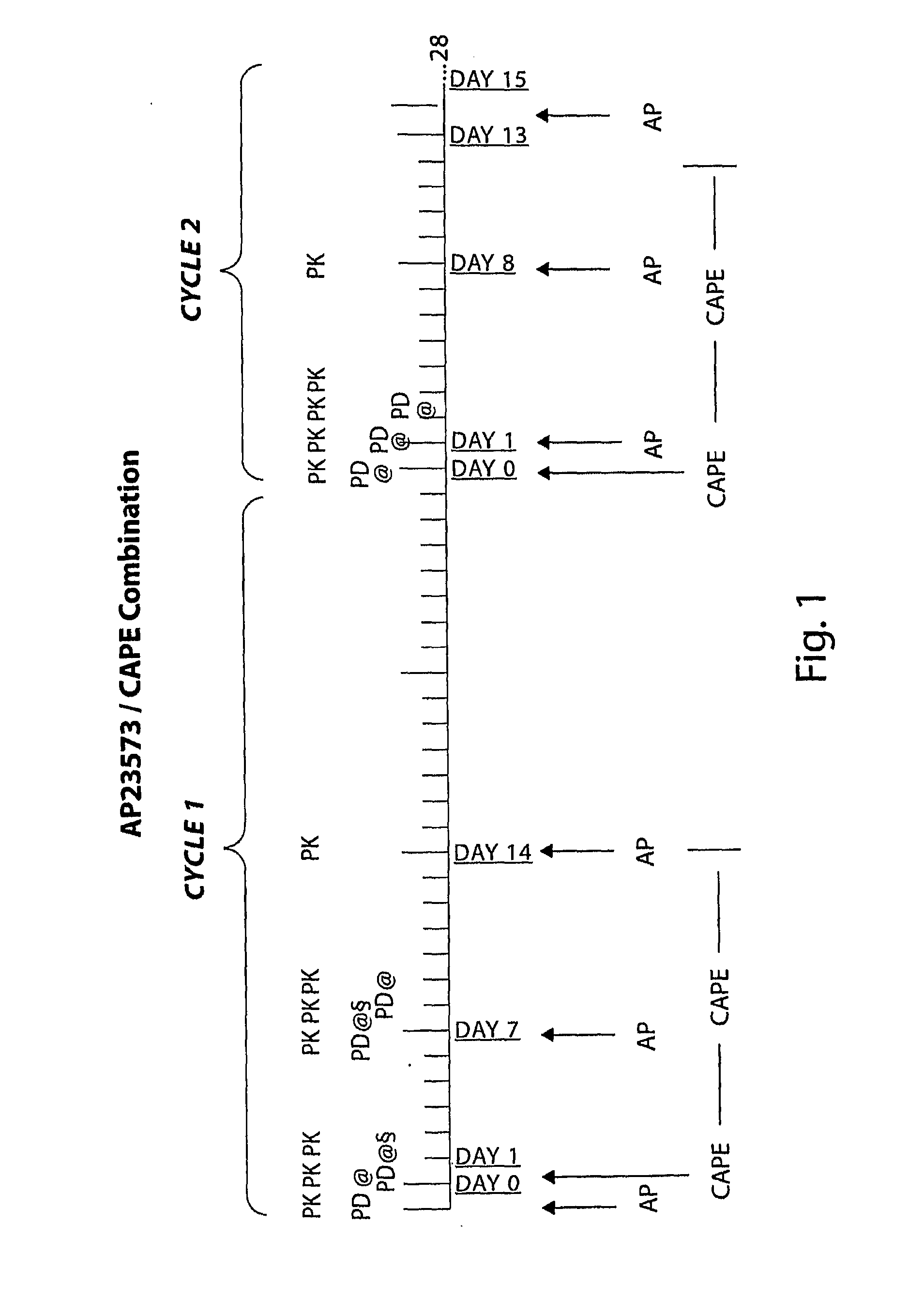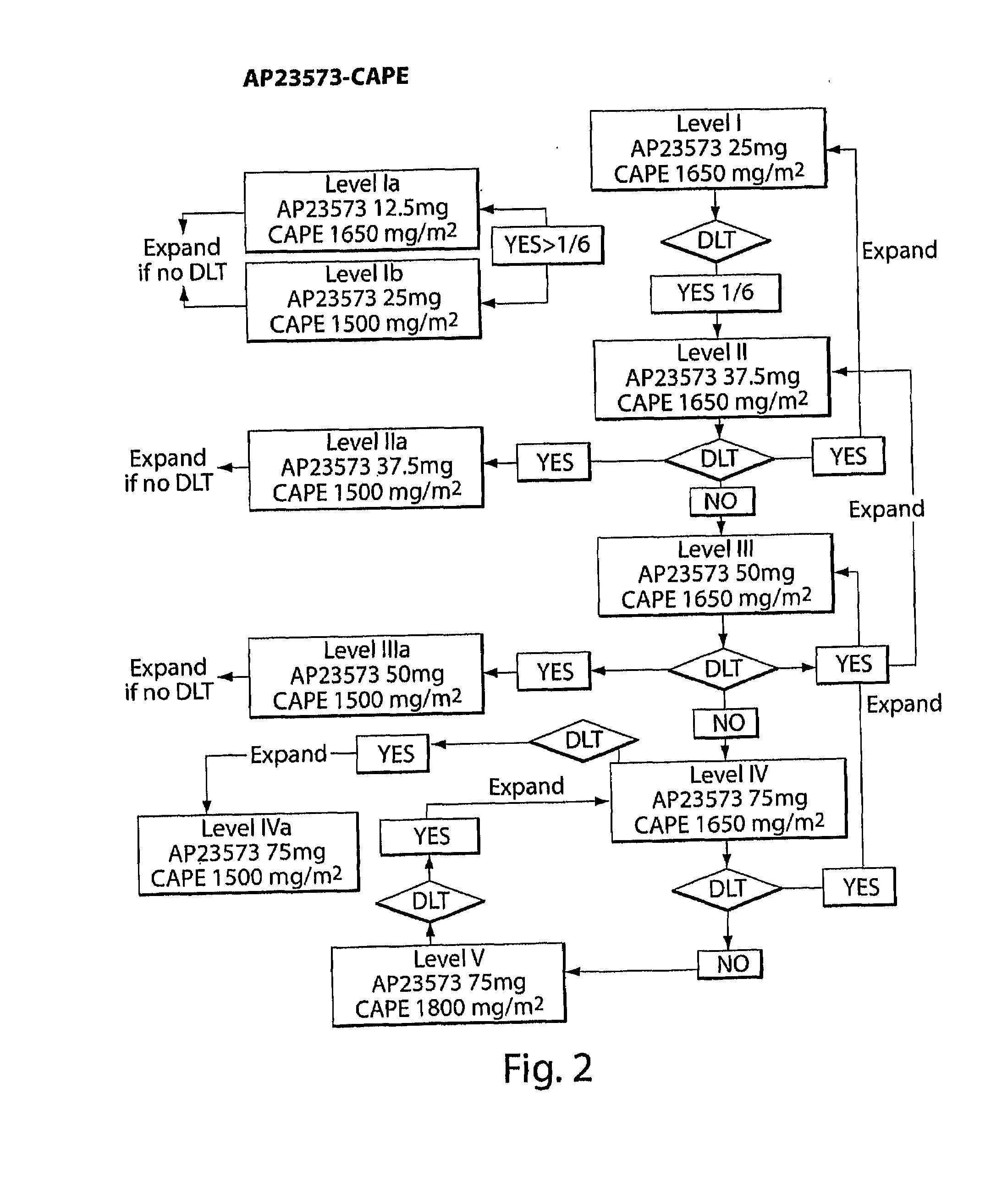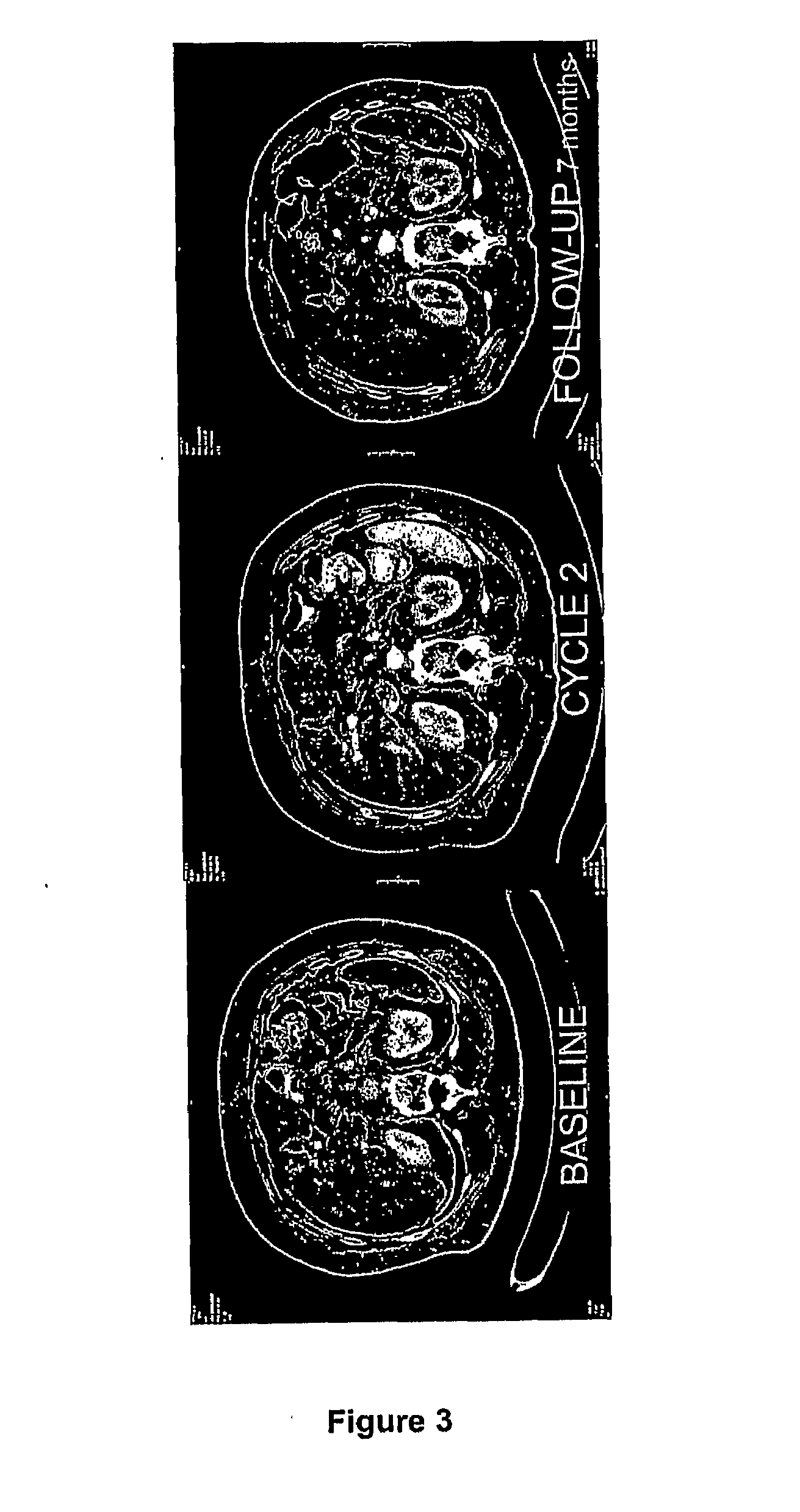Capecitabine Combination Therapy
a combination therapy and capecitabine technology, applied in the direction of biocide, drug composition, antibody medical ingredients, etc., can solve the problems of chemotherapeutic agents that have been approved to date that exhibit profound and often dangerous effects, and the mitotic arrest is not easy to stop
- Summary
- Abstract
- Description
- Claims
- Application Information
AI Technical Summary
Benefits of technology
Problems solved by technology
Method used
Image
Examples
example 1a
Oral Formulation of the Rapamycin Analog, AP23573
[0179]The following procedure was used to prepare a tablet containing 10 mg of AP23573 and containing the listed components. The tablets are coated with two different coatings—a film-coated tablet for immediate release and an enteric-coated tablet for delayed release. The composition of the core tablet is shown in the following table. Core tablets are film-coated and may be used as such, or may be enteric-coated.
ComponentWeight PercentAP235738.00%Butylated Hydroxytoluene0.08%Hydroxy Propyl Cellulose 8%Lactose Monohydrate50.57% Microcrystalline Cellulose30.85% Croscarmellose Sodium2.00%Magnesium Stereate0.50%Dehydrated Alcohol (Ethanol)*—*Use in processing but does not necessarily appear in final product
[0180]Hydroxypropyl Cellulose, Lactose Monohydrate, Microcrystalline Cellulose, and half of the Croscarmellose Sodium, were mixed in a high shear granulator. The AP23573 and Butylated Hydroxytoluene (BHT) were dissolved in Dehydrated ...
example 1b
IV Formulation of AP23573
[0186]62.5 mg / mL of AP23573 in ethanol is diluted with a diluent comprising 5.2% propylene glycol and 5.2% polysorbate 80 in Water for Injection (WFI). The diluted drug product is further diluted in 0.9% normal saline prior to administration to patients. Prior to dilution it may be kept in storage at −20° C. for at least 6 months. The diluent is recommended for storage at 2-8° C. for at least 6 months.
[0187]The diluted AP23573 is prepared for administration to patients in 250 mL of 0.9% normal saline and may be administered to patients by intravenous infusion over a 30-minute period.
example 2
Phase Ib Pharmacokinetic (PK) and Pharmacodynamic (PD) Study to Define the Optimal Dose for Combining the mTOR Inhibitor AP23573 with Capecitabine (CAPE)
I. Introduction
[0188]AP23573 is a novel mTOR inhibitor that has demonstrated single-agent, anti-cancer activity in phase I and phase 2 trials, in a range of solid tumors; dose limiting toxicity was oral mucositis with other dosing schedules. In vitro experiments show that AP23573 is at least additive with several cytotoxics including 5-fluorouracil (5FU). Capecitabine (CAPE) is activated to 5FU by thymidine phosphorylate which may be highly expressed in tumors and correlates with progression through angiogenic mechanisms controlled by mTOR.
[0189]Vascular endothelial growth factor (VEGF) is a major angiogenesis growth factor that induces angiogenesis and vasculogenesis in vivo through interaction with the tyrosine kinase receptors VEGFR-1 (flit) and VEGFR-2 (flk-1 / KDR) on endothelial cells. mTOR inhibition is associated with decrease...
PUM
| Property | Measurement | Unit |
|---|---|---|
| weight | aaaaa | aaaaa |
| temperature | aaaaa | aaaaa |
| width | aaaaa | aaaaa |
Abstract
Description
Claims
Application Information
 Login to View More
Login to View More - R&D
- Intellectual Property
- Life Sciences
- Materials
- Tech Scout
- Unparalleled Data Quality
- Higher Quality Content
- 60% Fewer Hallucinations
Browse by: Latest US Patents, China's latest patents, Technical Efficacy Thesaurus, Application Domain, Technology Topic, Popular Technical Reports.
© 2025 PatSnap. All rights reserved.Legal|Privacy policy|Modern Slavery Act Transparency Statement|Sitemap|About US| Contact US: help@patsnap.com



